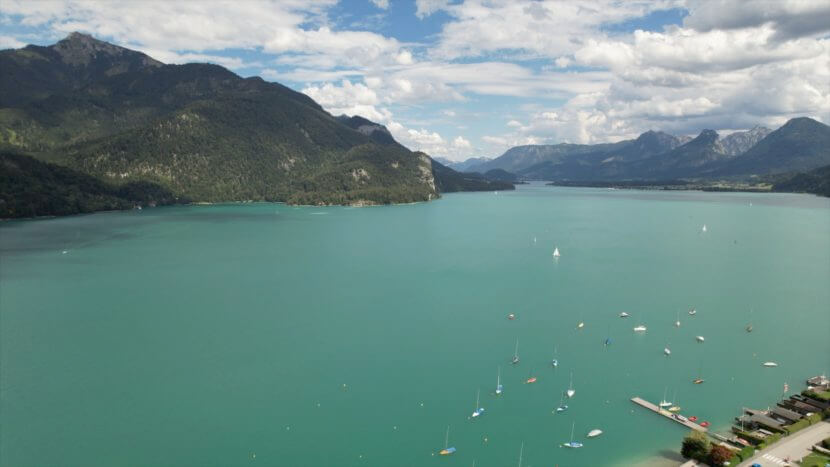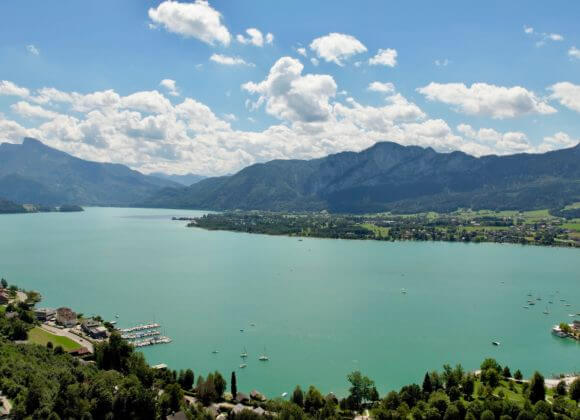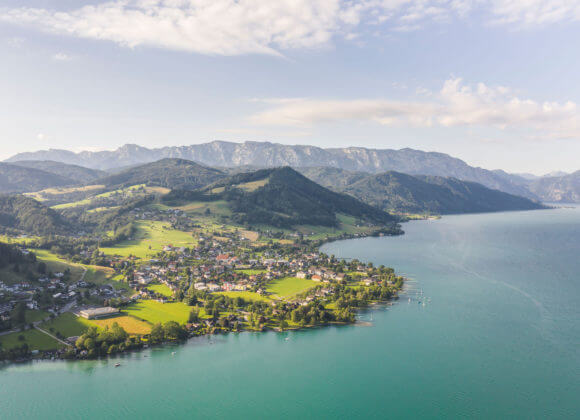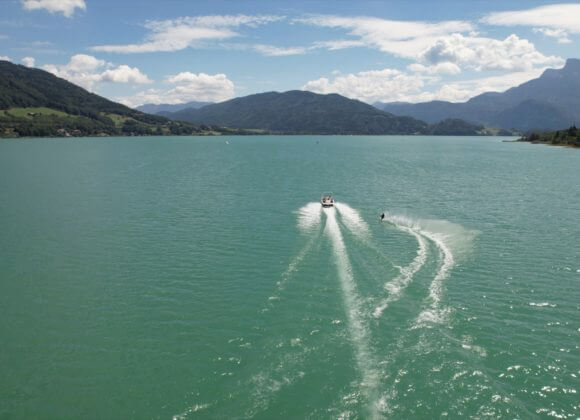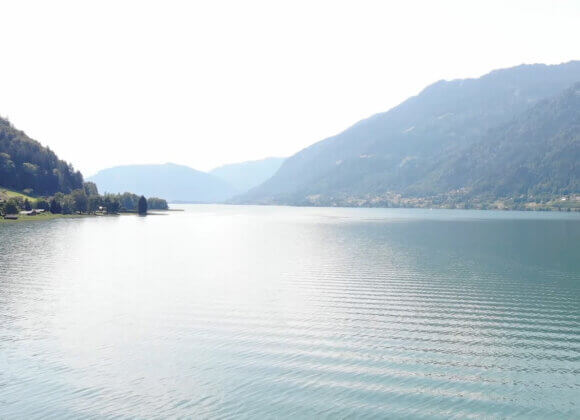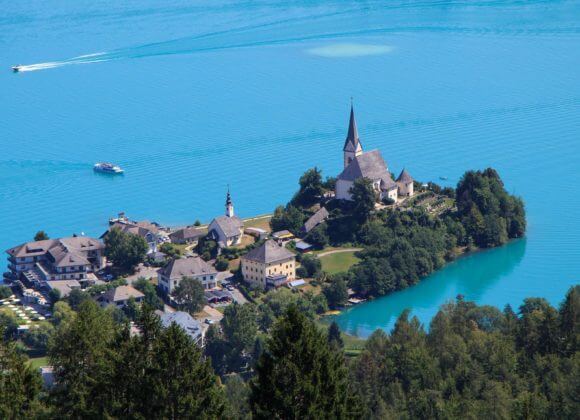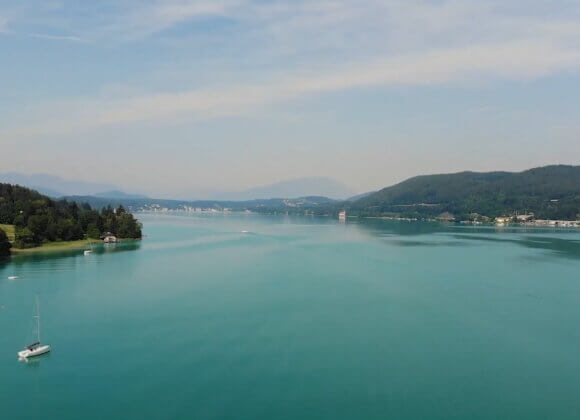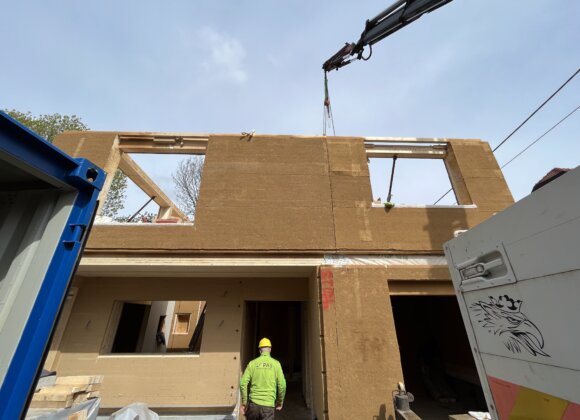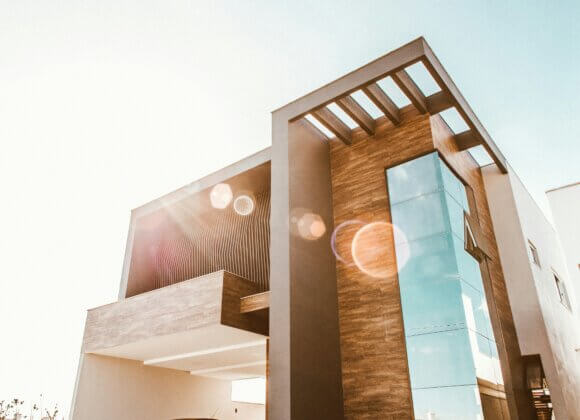7 Lakes Series – Living at Lake Wolfgang
History
Wolfgangsee, formerly Abersee, is an alpine rim lake of the Salzkammergut. For the most part it is located in the northeast of Salzburg, a small part belongs to Upper Austria. It is one of the most famous Salzkammergut lakes. The communities of St. Gilgen, Strobl and St. Wolfgang, as well as the rest of the area around the lake are considered a vacation region.
Hunting and fishing rights were granted by the Bavarian Duke Odilo and Bavarian settlers began to cultivate the landscape around the lake under the guidance of monks from Salzburg and Mondsee. But due to the competing monasteries, there were always disputes about Abersee, whose name was first recorded in the Salzburg property register in 788 as “Abriani Lacus”. Until the 10th century the name was Aebernsee, then it changed to Abersee. It was not until the 14th century that the name Wolfgangsee appeared, but it remained an exception for a long time – one suspects a reference to pilgrims. The name Abersee, however, has several backgrounds. The word part Aber comes from the Celtic and derives from “abria”, the mouth of the river. Thus, the lake may have acquired its name origin as the “lake at the mouth of the river”. But in the meantime, this assumption has been ruled out. It is believed that the name goes back to a person named Aparin, who owned land on the lake and executed fishing rights.
At 16. and In the 17th century, after the settlement of St. Wolfgang, the name found its appearance on the first maps. But a final abandonment of the name Abersee led back only to the rapidly expanding tourism after the Second World War. Until the 19th century, both names were represented on maps.
Data & Facts
Lake Wolfgang was formed by the erosion activity (removal of rocks) of the Traungletscher. With an area of 13.5 square kilometers, a length of ten kilometers and a maximum width of 1.9 kilometers, it is one of the largest Salzkammergut lakes. Its deepest point is 114 meters, with a visual depth of 10.3 meters, its sea level is 538 meters.
The lake area belongs, as already mentioned, largely part of the province of Salzburg. A narrow strip in the northeast to Upper Austria. There, directly on the shore, rises the Falkensteinwand, behind it lies the Schafberg. To the east is the Bürgl, to the south rises the Sparber and to the west the Zwölferhorn. The mountains belong to the Salzkammergut mountains.
The lake has also been designated a reference water by the EU because its water quality is very high. Native here is the pearlfish, which is found only in very clean lakes.
Things to know
- Lake Wolfgang has a single island called “Metzgerinsel” and on it stands the Ochsenkreuz.
- Wolfgangsee-Schifffahrt offers connections across the lake all year round.
- The Salzkammergut local railroad “Ischlerbahn” operated between Salzburg city and Bad Ischl from 1891 and 1957.
- During the interwar period, people met in posh hotels for tea or cocktails with Hollywood stars. The Grand Hotel St. Wolfgang was high society meeting place number one. The modern way to get there was by plane. For this purpose, a flying machine was always available during the summer months. This air movement contributed extensively to the tourist boom.
- The event hotel Scalaria organized for several years the “Scalaria Air Challenge” for seaplanes.
- The operetta “Im Weißen Rössl” was filmed in the hotel of the same name in St. Wolfgang. Thus, the place became internationally known.
Tourism & Sports
The large villas on the lakeshore already had their own boathouses around 1900, as there was a lot of sailing and rowing boating on the lake. At the same time the Rowing Club Wolfgangsee was founded, in 1901 the Union Yacht Club Wolfgangsee.
Luxurious hotels and upscale villas already had their own tennis courts at the time.
Hikers can enjoy an approximately 27 kilometer long circular trail around the lake – divers of a year-round clear water. At the Frenchman’s Redoubt there is a beautiful underwater landscape with sunken trees, or a part of the Falkenstein Wall can be discovered underwater, as well as artifacts from World War II.
Of course, there is also something for climbers at the lake. The Falkenstein wall also functions as a climbing wall and, with its 28-meter jump height, is a highlight for all cliff jumpers.
Interview
Now follows the interview with our already well-known interview guest of the 7 Lakes Special, realtor Eva Bamberger, whom we asked the following questions about Lake Wolfgang and its luxury properties, as well as future prospects and trends.
What makes the Wolfgangsee for you so special?
Lake Wolfgang is a childhood memory for me – like a beautiful fairy tale. The three villages St. Wolfgang, Strobl and St. Gilgen are pure Salzkammergut and unique in symbiosis with the lake.
Which trend see you see for properties at Lake Wolfgang?
The trend in property purchases is towards third, fourth, fifth rows with panoramic windows to bring the lake home – lake views and natural pools are the Trend. And, of course, to build and live as environmentally conscious as possible.
What is this trend based on?
There are hardly any offers left in First and Second Row and many buyers now focus on year-round use, where the lake alone is no longer decisive, but the overall offer of nature, culture and culinary delights.
Are there any reasons to believe that this trend could change?
I think that the trend from the location-independent home office, the love of nature and tradition must be understood not only as a trend, but as a part of life. And this, of course, benefits the Salzkammergut, which fulfills exactly these attributes.
What is the profile of the classic buyer at lake Wolfgangsee – who is your primary target group?
Wolfgangsee is more international in terms of its audience than the other Salzkammergut lakes. On the one hand, this is due to the fact that economic and political giants from Germany have already unconsciously stirred the advertising drum for the Wolfgangsee in the 1980s. In addition, there are popular Austrian films with acting legends such as Peter Alexander and Co. who have enjoyed the ambience of Lake Wolfgang not only for filming. And of course, the renowned private university in St. Gilgen also attracts international buyers with permanent residences.
In the luxury segment, people never like to talk about prices -… can you give me an overview of the prices per square meter directly at the lake and “Second Row”?
First Row we are at 15,000 to 20,000 EUR perm2. Special objects on the lake can also be more expensive. Second Row we are about 8,000 EUR perm2.
Are houses, apartments or plots of land currently the most sought after, or is there a clear favorite?
All three categories are sought. The largest supply in the low supply market is still in condominiums.
Especially in the Salzkammergut there are – so it seems to me – there is with lake properties a higher off-market offer than transparent offers. Hold You this makes sense and why, in this region in particular, are there your off-market offers are so desirable on the part of the the sellers?
Internationally, this is unusual and also in other exclusive locations in Austria, for example in the Carinthian lake regions, people tend to move away from off-market offers. In other words, properties and prices are presented transparently in selected media.
We note on FINDMYHOME.AT/Premium Living saw a very strong increase in demand for lakefront properties (34% year-on-year). Is this also reflected in the growth in the value of luxury real estate at Lake Wolfgang??
Yes. Prices have once again risen very rapidly. We have many more customers looking than offers.
What has been the price trend over the last three years?
First Row, I can confirm your numbers. Sure, depending on the object between 30 and 40 percent. Second Row maybe even a touch more. Compared to other lake areas, Lake Wolfgang is very constant in value, as it has always been highly settled. If I take Lake Faak in Carinthia as an example here, apartments that were available for just under EUR 5,000 perm2 three years ago now cost EUR 15,000 and more perm2.
Has the demand for properties with lake views, but not directly on the lake, increased just as much?
Yes. In any case, as mentioned at the beginning, even with the trend of year-round use more than First Row.
Do you think there will be more buy-to-let models in the region in the future?
I welcome this model as it revitalizes the hotel industry, creates jobs and brings returns. However, I cannot judge and assess to what extent this development is supported by the communities.
Living at the Wolfgangsee: Buying real estate at Mondsee
Living at Austria’s lakes: Buy real estate at Austria’s lakes


